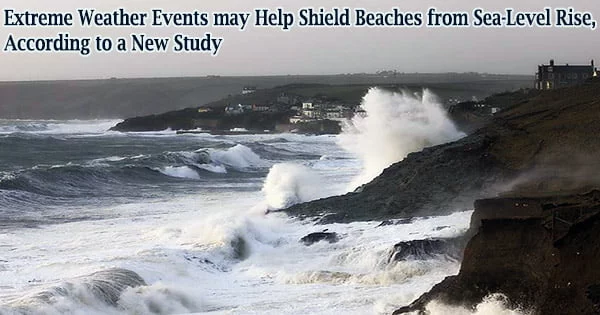Images from the aftermath of severe coastal storms typically only show the significant harm done to the beaches, dunes, adjacent property, and infrastructure. However, a recent international study found that by bringing in fresh sand from deeper oceans or from nearby beaches, extreme weather events could help protect beaches from the effects of sea level rise.
Today, the research, which was conducted under the direction of Dr. Mitchell Harley from the UNSW Water Research Laboratory, was published in Nature Communications Earth & Environment.
“We know that extreme storms cause major coastal erosion and damage to beachfront properties,” Dr. Harley says.
“For the first time we looked not just above water, where the impacts of extreme storms are easy to see, but also deep down below the water as well. What we found was that hundreds of thousands of cubic metres of sand was entering these beach systems during these events that’s similar to the scale of what engineers use to nourish a beach artificially.”
This might be sufficient to mitigate some of the long-term effects of sea level rises brought on by climate change, such as eroding coasts, by many decades. It offers a fresh perspective on powerful storms.
Wave after wave
The study evaluated three coastlines in Australia, the UK, and Mexico in cooperation with scientists from the University of Plymouth and Autonomous University of Baja California. Each saw a series of intense storms or protracted storm clusters, followed by a more tolerable beach healing period.
In Australia, when a storm notoriously tore a swimming pool from a residence overlooking the shoreline in 2016, researchers looked at Narrabeen Beach in Sydney.
We are not quite sure whether this extra sand has come from offshore or from around the corner, or even both, but we do now understand that extreme waves can potentially contribute positively to the overall sand budget, despite causing upper beach and dune erosion.
Professor Gerd Masselink
They were able to demonstrate that sediment additions were sufficient to hypothetically counteract decades of expected coastline retreat using high-resolution measurements of the beach and seabed.
“For the first time, we were able to mobilise specialised monitoring equipment to get really accurate measurements before and after a storm,” Dr. Harley says.
“We used a combination of a twin engine aeroplane equipped with a Lidar scanner, drones and jet skis going back and forth along the beach taking measurements below the surface right before and after the storm hit. This was how we were able to get an accurate picture of the volume of sand moving for each storm.”
Since 2006, UK researchers from the University of Plymouth’s Coastal Processes Research Group have been examining Perranporth beach in Cornwall using a combination of monthly beach topography surveys and semi-annual bathymetric measurements.
Here, the intertidal beach and dune system had very severe sand losses as a result of the extreme winters of 2013/14 and 2015. However, it was found that by 2018, the beach had accumulated 420,000 cubic meters of sand when the beach’s entire sand budget, including the submerged portion of the beach, was considered.
“We are not quite sure whether this extra sand has come from offshore or from around the corner, or even both, but we do now understand that extreme waves can potentially contribute positively to the overall sand budget, despite causing upper beach and dune erosion,” said Professor Gerd Masselink, who leads the Coastal Processes Research Group.
Bruun rule
One of the most important questions facing coastal managers as they prepare for the increasing effects of climate change is how much a shoreline might change as a result of sea level rise.
This has previously been approximated using the Bruun rule, a straightforward methodology. According to this theory, the shoreline should recede somewhere between 20 and 100 meters for every metre of sea level rise, depending on how steep the coast is.
By the end of this century, it has been predicted using the Bruun rule that global sea-level rise brought on by climate change will cause a significant retreat or loss of about half of the world’s sandy beaches.
“The Bruun rule however has been criticized for its simplicity, as it doesn’t take into account the many complex factors about how individual beaches respond to sea-level rise,” Prof. Masselink says.
“This includes the presence of sand stored in deeper water immediately off the coast and its potential to be mobilised during extreme weather events.”
These results, according to Dr. Harley, demonstrate the need of taking severe storms into account when predicting the long-term transport of silt along coastlines.
“It further reinforces that we really need to be doing a beach-by-beach understanding of how our beaches are going to change as global sea-level rise continues.”
Looking past the eye of the storm
Dr. Harley claims it is difficult to predict how much sand might one day be mobilized because there are so few measurements of the seafloor just off our shores. Even though these results only come from three extremely severe storm sequences, they could alter how people view the long-term outlook for our coastlines.
“We’re only scraping the surface here. We need to repeat these types of monitoring measurements for more storms and different types of coastal settings under various conditions,” he says.
“Only then, will we be able to get a clearer understanding of how much sand is stored off the coast that could potentially help buffer the impacts of sea level rise and a clearer picture of what our beaches could look like in the year 2100 and beyond.”





